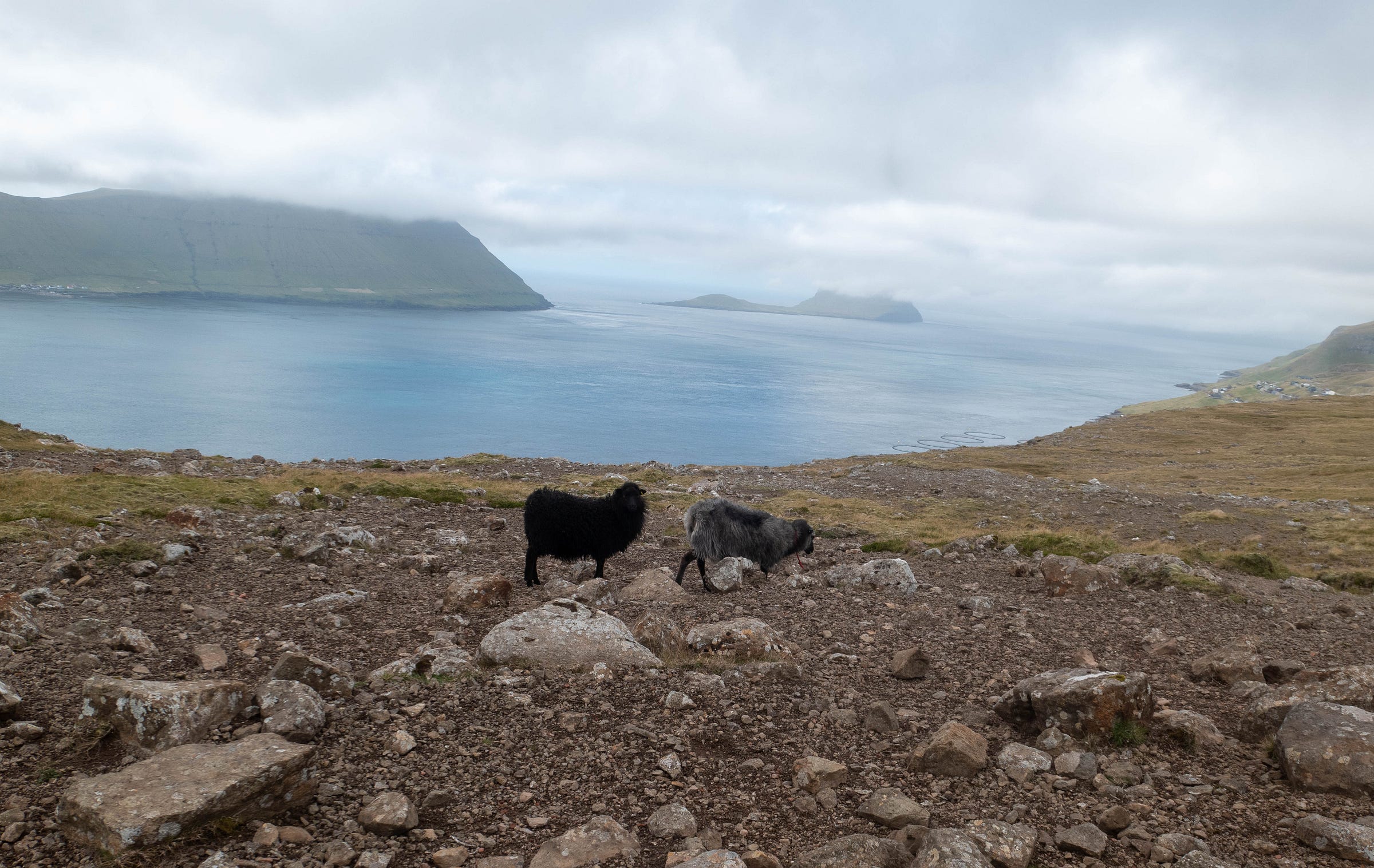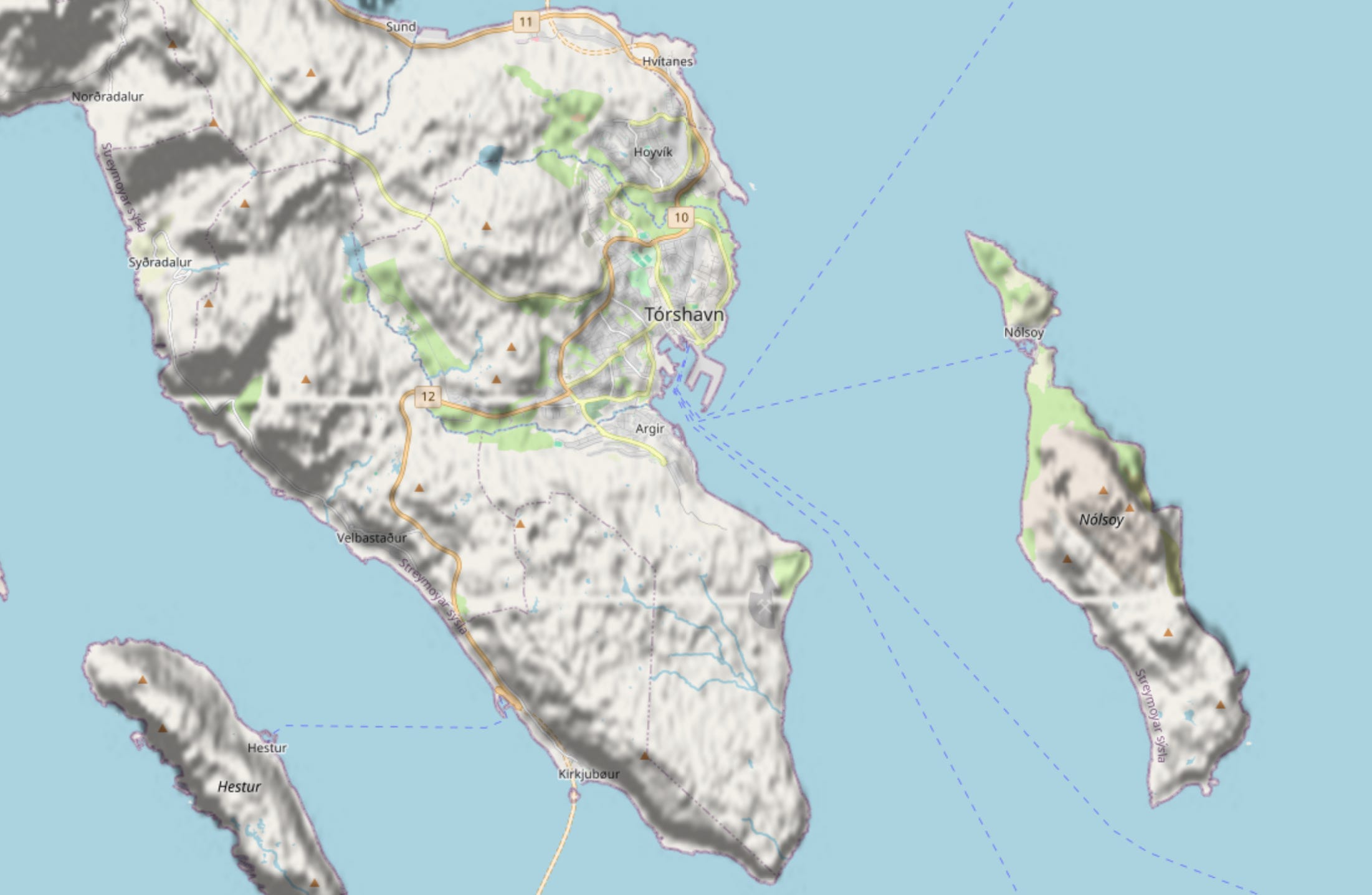Unlike most other lifelong geography nerds, I was never drawn to the Faroe Islands, never taken by their quirky geography (chain of volcanic islands in the North Atlantic), history (Viking stuff), and political status (it’s kind of a nation of sixty thousand people, kind of not), and I'd only booked my trip to them on a lark, attracted by the absurdity of finding a direct, and inexpensive, flight to Vágar airport (FAE) from the small, barely used, and sad Stewart airport (SWF), fifteen miles from my home.
I was curious who else would be on my flight, and wasn’t surprised to find out the answer was almost nobody. There were about thirty of us on the Airbus A320, which in a very Faroe Islands egalitarian we-are-all-in-this-together ethos, had one single class, which meant it was about a hundred and fifty people short of full.
Almost every other passenger was on the flight for the same reason I was, which is they lived near Stewart, including five thirty- year-old working class friends from Newburgh, who, along with me, spent most of the six hours peppering the three flight attendants with questions about their life (they had all been born in Faroe Islands, and still lived there), the uniqueness of the flight (there would be two more, and then it would be discontinued because of lack of interest), and what we should see once we landed (way too many place names that all sounded the same and so no of us us had any clue how to spell them).
Since we arrived at two a.m., and since the airport is on a different island from the capital (and the only city of any size, Tórshavn), I’d broken my rule of busses only, and at the urging of the owner of the home I was staying in, booked a cab for the forty mile trip.
My driver was an austere, but bemused man, with a pet frustration that tourists marveled only at the natural wonders in the Faroes, and didn’t appreciate the man-made ones, like the three-mile tunnel we were passing through connecting Vágar to Streymoy Island, not to mention the twenty other tunnels and all the great roads connecting all the isolated and secluded villages on eighteen different islands, each separated by fjords, bombastic seas, and howling winds.
He also gave me an early clue on how central place is to the Faroese.
Me: Are you from the Faroes?
Him: Yes. I have lived here my entire life, except for four years when I went to Denmark for college.
Me: Same with your parents?
Him: Yes.
Me: Same with your Grandparents?
Him: Yes.
Me: Ok. I guess my question is, when did your relatives come to the Faroes?
Him: Hmmm. I suppose the answer to that would be eight hundred AD, when the Vikings came here.
The notion that the Faroe Islands is a single small town where everyone knows everyone else because they’ve all been here forever, a town that just happens to be scattered across five-hundred square miles of islands, continued when I told the driver the address of the AirBnb, and he said, “Oh, your are staying with Malan then?” and yes I was staying with Malan, or at least in her basement apartment. Malan had told me in a message that I shouldn’t worry about getting in after midnight, or three a.m., because she always left the door unlocked and I could let myself in, and she had turned a night light on for me, and made up my bed, and knowing that nothing was open after midnight anywhere (except of course some of the hatcheries, but they don’t serve food, only hatch fish), she’d left me some snacks on the dining room table because I was probably hungry, which given that the airplane served no food, and I’d only packed three peanut butter and jelly sandwiches, I greatly appreciated.
The next morning I got up to hike to Kirkjubøur, on the opposite coast, which on my map seemed like a routine walk, over, or at least around, the 1,300-foot mountain that dominates the center of Streymoy Island, and I could see from my apartment.
While the Faroes has plenty of mountains, mountainous isn’t the greatest description, because they’re more like stacked terraces of volcanic rock slabs that peak only when, Jenga like, there’s no more space for another layer, resulting in a country of ziggurats built by nature.
After I got out of Tórshavn, which extends for a surprising distance, the road became a trail, which became steep, the weather turned mercurial, and the footing mutable, I began to question my decision. I was jet-lagged, with only a few hours of sleep, and heading off into a region I’d been told within the first few hours by every Faroese I’d met (airline stewards, taxi driver, Malan) that you must respect the weather because blinding fog and rain can happen at any moment, and have disoriented life-long residents.






